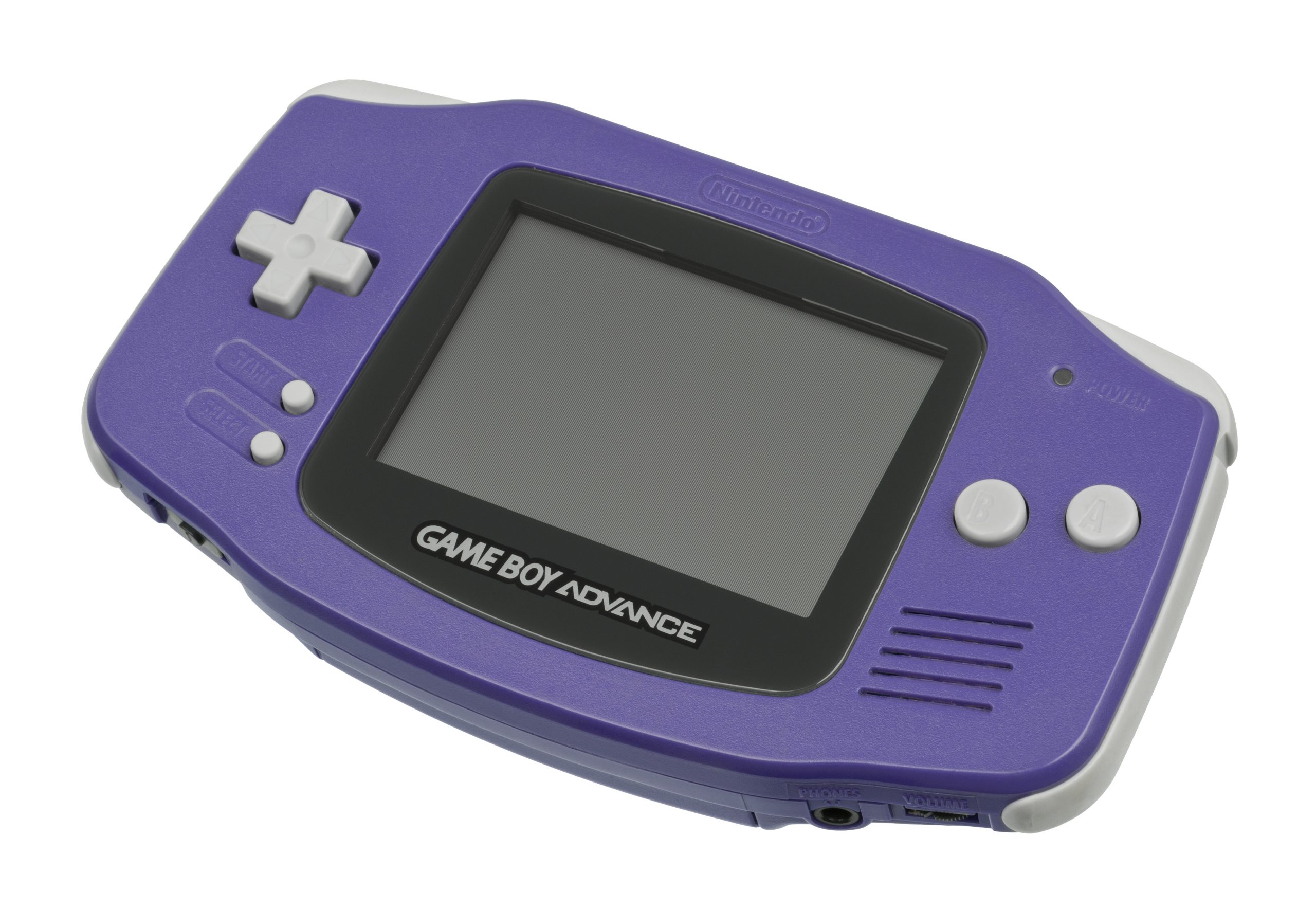
The best-selling Nintendo console of all time isn’t a home console like the Wii or Switch, but the Nintendo DS. Nintendo’s handheld consoles make up a vital part of its history, providing the video game industry with a number of technical innovations, introducing their own beloved video game properties, and helping keep Nintendo alive and relevant during periods when its home consoles were floundering against their competitors.
Simply put, the Nintendo we know today wouldn’t exist if it weren’t for the Game Boy and its successors over the subsequent decades. With 2024 marking the 35th anniversary of the Game Boy, here is a look back at the creation of the Game Boy, how its seismic impact fits into the wider legacy of Nintendo overall, and the importance of Nintendo’s handheld console line in the video game industry.
The Origins Of The Game Boy
Before beginning development on the Game Boy, Nintendo had experienced significant success with handheld console gaming with its Game & Watch series of electronic games. However, the Game & Watch devices were each only programmed to play a single game. Nintendo wanted to create a portable system comparable to its globally successful Nintendo Entertainment System with interchangeable game cartridges. Nintendo wasn’t alone in this ambition, with the Atari Lynx, Sega Game Gear, and NEC TurboExpress in various stages of development concurrently in the late ‘80s.
In contrast to its competitors, Nintendo developed the Game Boy with a conscious effort to keep manufacturing costs and the rate of battery consumption low. Whereas the competition favored a backlit LCD color display, the original Game Boy model omitted a backlight entirely and utilized a grayscale display. This strategy paid off, with the Game Boy launched in 1989, maintaining a lower sales price, with a price of $89 compared to the Lynx’s $179 and $149 for the Game Gear.
Rather than emphasizing technological innovation, Nintendo leaned into ensuring games available on the Game Boy were of a superior gameplay quality and fun factor. Launch titles for the Game Boy included Super Mario Land and Tetris, along with several sports games, with many third-party NES franchises, like Castlevania and Mega Man, appearing on the Game Boy.
In the years leading up to the Game Boy Color launch in 1998, Nintendo would make sure that its biggest franchises at the time – Super Mario, Donkey Kong, Metroid, and The Legend of Zelda – had a presence on the Game Boy with original titles while the Kirby franchise made its debut on the original Game Boy with Kirby’s Dream Land in 1992.
Game Boy Goes Color
By the ‘90s, gaming technology had improved substantially. So, Nintendo began development on a smaller, color display variant of the Game Boy by 1992. Given the size of Game Boy’s install base and game library, the Game Boy Color was designed to be completely backward compatible with its predecessor’s games. Games published in 1998 onwards were developed specifically for the Game Boy Color. Launched in the fourth quarter of 1998, Nintendo made sure that the first year of the Game Boy Color had several high-profile releases to help with its launch.
1998 saw updated versions of Tetris and The Legend of Zelda: Link’s Awakening for the Game Boy Color. Each included additional content to justify the re-release. Most importantly, 1998 saw the release of Pokémon Red & Blue in North America and Europe; two years after its initial Japanese release. Though developed for the original Game Boy rather than the Game Boy Color, Pokémon Red & Blue, along with the enhanced remaster Pokémon Yellow, were the three best-selling Game Boy games in 1999, became the best-selling games on the Game Boy overall with over 46 copies sold, and spawned a worldwide phenomenon that continues to be one of Nintendo’s most popular properties decades later.
Though early Game Boy Color titles were designed to be compatible with the original Game Boy, titles developed later in the handheld console’s life cycle were exclusive to the Game Boy Color, taking full advantage of the more advanced hardware. Games like The Legend of Zelda: Oracle of Ages & Seasons and Pokémon Crystal could only be played on a Game Boy Color, with the latter game selling over 6 million copies. The best-selling game developed primarily for the Game Boy Color was Pokémon Gold & Silver, which went on to sell over 23 million copies.
The combined sales of all Game Boy models, including the Game Boy Pocket and Game Boy Light, came out to over 118 million units as Nintendo ended its full support for the console in 2003. The Game Boy Color era, and its successors, would help Nintendo at a time when its home console performance was struggling for the first prolonged period since coming to America in 1985.
The Advanced Advantage
With the Nintendo 64, Nintendo had lost the lead in the home console market for the first time to the PlayStation. By 1999, Nintendo began working on a successor to both the N64 and Game Boy Color: the GameCube and Game Boy Advance, respectively. The idea was for the consoles to interface with one another intuitively. The Super Nintendo had the Super Game Boy peripheral, allowing gamers to play most Game Boy and Game Boy Color games on it, while the GameCube and GBA were designed with interactivity in mind via a link cable.
The GBA featured a 32-bit processor and was completely backward compatible with Game Boy and Game Boy Color games. It was also more efficient. Compared to the original Game Boy, which required four AA batteries, the GBA only required two. Even with its significantly more powerful processor and display, it boasted a battery life of up to 15 hours. Compared to the launch of the Game Boy, Nintendo faced virtually no serious competition in the handheld console space when it launched the GBA in 2001. Sega was in the process of leaving the console market entirely and Sony’s PlayStation Portable was years away from launch.
The GBA library grew to include 1583 games during its lifetime, including a healthy mix of first and third-party titles. The GBA saw Nintendo continue its enormously successful Pokémon franchise with a number of new games while third-party developers like Capcom and Konami reinvigorated the Mega Man and Castlevania franchises on the console. Nintendo began to lean more heavily into RPG and tactical strategy games on the GBA than it did with the Game Boy Color or N64. The Fire Emblem and Advance Wars series were localized in North America for the first time on the GBA while new properties like Golden Sun proved popular as RPGs found a greater audience in America.
Though Nintendo had certainly explored re-releases on other platforms before, most notably with Super Mario All-Stars on the SNES, the GBA saw the company and its partners revisit a lot of classic NES and SNES titles for the portable console. Nintendo remade most of its prior Super Mario games with the Super Mario Advance series while The Legend of Zelda: A Link to the Past and Donkey Kong Country also got remakes. Similarly, Capcom’s Street Fighter II and Alpha 3, Square’s Final Fantasy, and Namco’s Pac-Man were all successfully updated for the GBA.
The GBA marks something of the end of an era for Nintendo while opening new frontiers for the company to explore with its subsequent home and handheld consoles. Later models of the GBA would ditch the backward compatibility with Game Boy software to keep manufacturing costs down and the GBA is the last handheld to carry the Game Boy branding. The GBA was the first Nintendo console to support WiFi, albeit through a peripheral released late in its lifetime. It also utilized a landscape presentation compared to its predecessors’ vertical display. The GBA would go on to sell over 81 million units worldwide through all its various models combined.
It cannot be overstated how much Nintendo was struggling during this era, especially compared to the lofty commercial heights and brand appreciation it enjoyed in the late ‘80s and early ’90s. The N64 had only sold 32 million units. That’s lower than the PS1’s 102 million units and even the SNES, which sold over 49 million units. While the GBA sold relatively well, its performance compared to the Game Boy and the lukewarm reception to its integration with the GameCube (which failed to match the N64’s sales) led Nintendo to begin to look for success elsewhere in the handheld console market.
What followed wasn’t originally intended to completely replace the GBA, but its quick success would ultimately result in the former handheld’s short run. The GBA was Nintendo’s main handheld console for a brief three years before Nintendo turned to a successor to avoid following Sega in exiting the console industry around the same general period.
Handhelds Keep Nintendo Alive
The Nintendo DS was initially envisioned as a complement to the GameCube and GBA, rather than as a successor to the latter. The idea was to diversify the company’s standing. Aware of the dire straits Nintendo faced, chairman and former president Hiroshi Yamauchi ominously predicted that “if the DS succeeds, we will rise to Heaven but, if it fails, we will sink to Hell.”
The DS had processing power roughly on par with the N64, with its touchpad and stylus designed to be intuitively handled by players. It is the first Nintendo console to have a touchscreen, rechargeable internal battery, and a built-in wifi connection to reflect the growing prominence of online gameplay. As to not alienate existing GBA owners and build cross-device appeal, the first two models of the DS were completely backward compatible with GBA games; a distinction that helped the DS quickly rise to become the GBA’s successor as Nintendo’s flagship handheld console.
Primarily first-party games thrived on the DS, with titles like New Super Mario Bros., Mario Kart DS, and a number of Pokémon and The Legend of Zelda games among the best-selling titles on the console. A selection of third-party developers acclimated well to the DS hardware, with Square Enix’s Dragon Quest and Konami’s Castlevania being among the more prolific. As the DS continued to grow, third-party developers would begin releasing remastered classic titles on the console, particularly Square Enix’s Final Fantasy and Chrono Trigger games.
Across all of its models, the Nintendo DS sold over 154 million units over its lifetime, making it the best-selling Nintendo console and the second best-selling console of all time, behind only the PS2. Not only did it help revive Nintendo from a commercial slump, but its touchscreen technology, would influence Nintendo’s future. While that technology is most apparent in the DS’ immediate successor, it would eventually branch into Nintenedo’s future home consoles.
To the Third Dimension and Beyond
Nintendo had been experimenting with 3D technology for a long time, from developing a peripheral for the Famicom to the unsuccessful Virtual Boy console in the ‘90s. Internal interest in a 3D display was reignited during the GameCube era due to the console’s capability of displaying stereoscopic 3D. However, the high cost of the planned peripheral led it to being dropped. With the Nintendo 3DS, the successor to the DS launched in 2011, this vision was finally realized and did so to eventual blockbuster success at another time when Nintendo needed the commercial boost.
As with the DS, the most successful games developed for the 3DS were first-party titles. Mario Kart 7, Animal Crossing: New Leaf, Fire Emblem, and a number of Pokémon games are among the console’s best-selling titles. The 3DS even got its own version of the fourth Super Smash Bros. game along with well-received remakes of The Legend of Zelda: Ocarina of Time and Majora’s Mask. Square Enix continued to publish best-selling Dragon Quest titles on Nintendo’s latest handheld, while Capcom found great success with its Monster Hunter franchise for the first significant time in North America with its 3DS installments.
After reclaiming its home console market dominance with the Wii, Nintendo slumped sharply with its 2012 follow-up, the Wii U, which was outsold by the PlayStation 4 and Xbox One. The 3DS initially experienced similar sluggish sales before a significant price cut five months after its launch improved its commercial performance considerably. The 3DS went on to sell over 75 million units, over five times as many units as the Wii U had.
Nintendo’s handheld console line and its role in the company’s overall history, legacy, and, on multiple occasions, its very survival, cannot be understated. The handhelds never quite experienced a commercial slump as the home consoles had at times, pushing what was technically capable of portable consoles while keeping an eye on that all-important fun factor that distinguished Nintendo from its competitors. As gaming sensibilities changed, Nintendo would look to the example set by its handhelds when creating new home consoles, specifically with the GameCube, Wii U, and Nintendo Switch. Without the Game Boy and its successors, the Nintendo we know today would never exist.
The post How Nintendo’s Handhelds Define The Company’s Legacy appeared first on Den of Geek.






